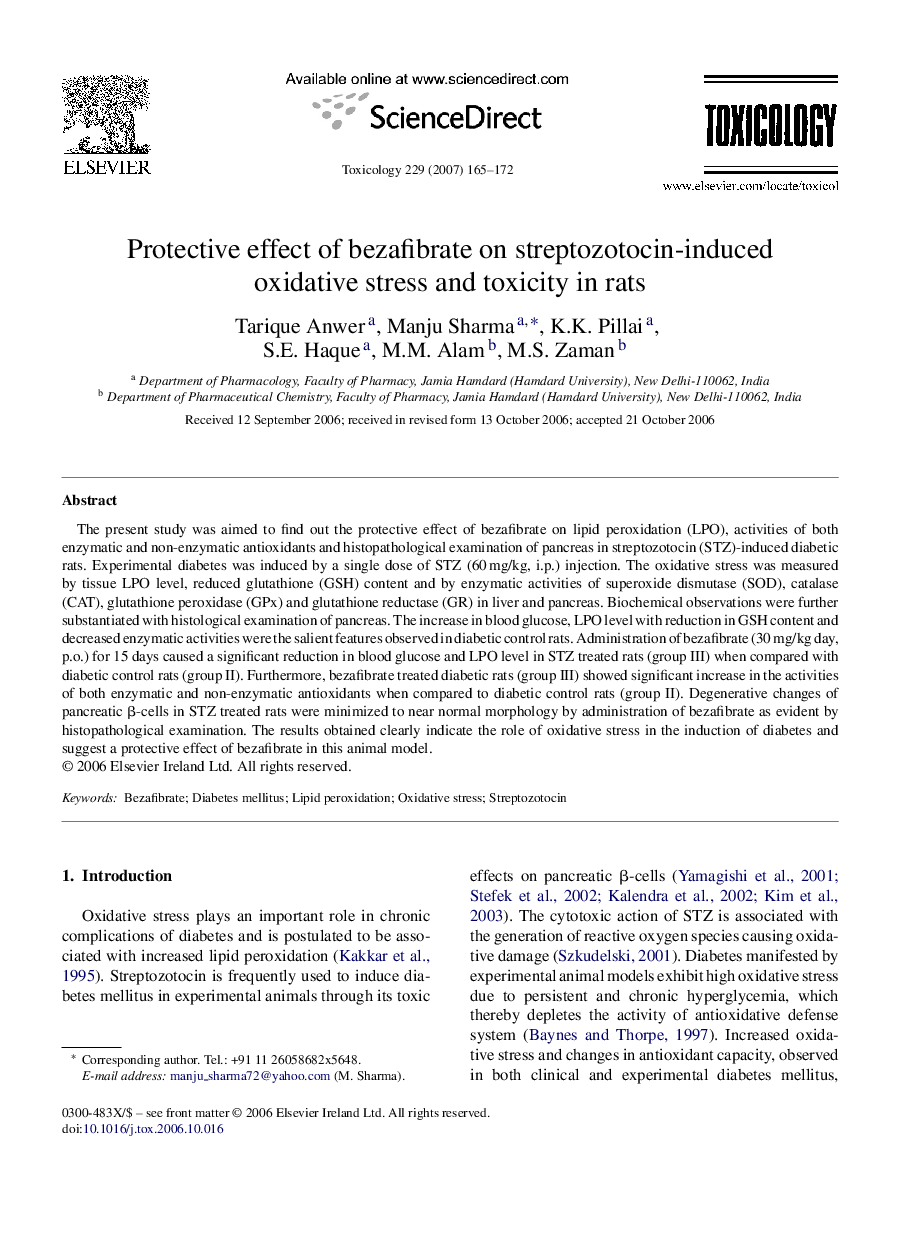| Article ID | Journal | Published Year | Pages | File Type |
|---|---|---|---|---|
| 2597801 | Toxicology | 2007 | 8 Pages |
The present study was aimed to find out the protective effect of bezafibrate on lipid peroxidation (LPO), activities of both enzymatic and non-enzymatic antioxidants and histopathological examination of pancreas in streptozotocin (STZ)-induced diabetic rats. Experimental diabetes was induced by a single dose of STZ (60 mg/kg, i.p.) injection. The oxidative stress was measured by tissue LPO level, reduced glutathione (GSH) content and by enzymatic activities of superoxide dismutase (SOD), catalase (CAT), glutathione peroxidase (GPx) and glutathione reductase (GR) in liver and pancreas. Biochemical observations were further substantiated with histological examination of pancreas. The increase in blood glucose, LPO level with reduction in GSH content and decreased enzymatic activities were the salient features observed in diabetic control rats. Administration of bezafibrate (30 mg/kg day, p.o.) for 15 days caused a significant reduction in blood glucose and LPO level in STZ treated rats (group III) when compared with diabetic control rats (group II). Furthermore, bezafibrate treated diabetic rats (group III) showed significant increase in the activities of both enzymatic and non-enzymatic antioxidants when compared to diabetic control rats (group II). Degenerative changes of pancreatic β-cells in STZ treated rats were minimized to near normal morphology by administration of bezafibrate as evident by histopathological examination. The results obtained clearly indicate the role of oxidative stress in the induction of diabetes and suggest a protective effect of bezafibrate in this animal model.
